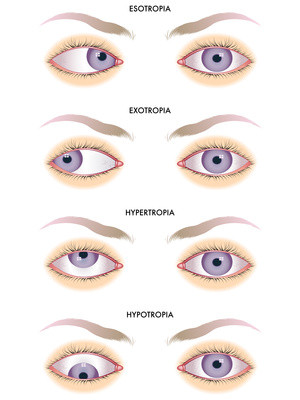Strabismus or (Cross-eyed or Wall-eyed)
Strabismus occurs when one or both eyes cannot maintain proper alignment and work together in a co-ordinated fashion.
One eye looks directly at the object, while the other eye is misaligned inward (esotropia or cross-eyed), outward (exotropia or wall-eyed), upward (hyperotropia) or downward (hypotropia). Consequently, people with strabismus can have double vision or monocular vision.
It is frequent in children and it can be constant or intermittent.


